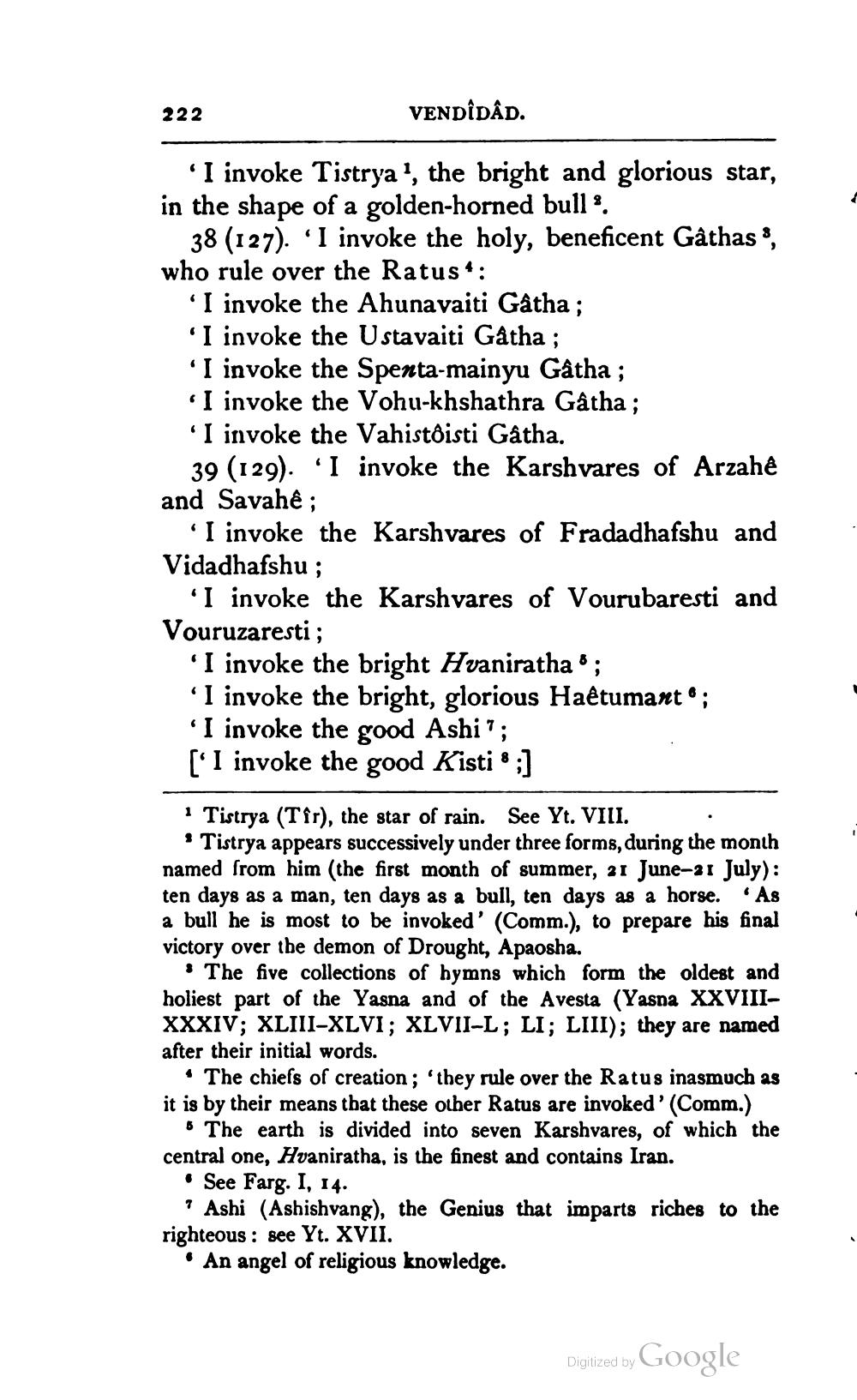________________
222
VENDÎDÂD.
'I invoke Tistrya', the bright and glorious star, in the shape of a golden-horned bull%.
38 (127). 'I invoke the holy, beneficent Gâthas, who rule over the Ratus":
I invoke the Ahunavaiti Gatha ; I invoke the Ustavaiti Gatha ; I invoke the Spenta-mainyu Gåtha ; I invoke the Vohu-khshathra Gatha ; I invoke the Vahistòisti Gatha 39 (129). *I invoke the Karshvares of Arzahê and Savahê;
* I invoke the Karshvares of Fradadhafshu and Vidadhafshu ;
'I invoke the Karshvares of Vourubaresti and Vouruzaresti;
I invoke the bright Hvaniratha ; 'I invoke the bright, glorious Haêtumanto; 'I invoke the good Ashi”; [' I invoke the good Kisti ;]
· Tistrya (Tfr), the star of rain. See Yt. VIII.
· Tistrya appears successively under three forms, during the month named from him (the first month of summer, 21 June-21 July): ten days as a man, ten days as a bull, ten days as a horse. As a bull he is most to be invoked' (Comm.), to prepare his final victory over the demon of Drought, Apaosha.
• The five collections of hymns which form the oldest and holiest part of the Yasna and of the Avesta (Yasna XXVIIIXXXIV; XLIII-XLVI; XLVII-L; LI; LIII); they are named after their initial words.
• The chiefs of creation ; 'they rule over the Ratus inasmuch as it is by their means that these other Ratus are invoked' (Comm.)
The earth is divided into seven Karshvares, of which the central one, Hvaniratha, is the finest and contains Iran.
• See Farg. I, 14.
? Ashi (Ashishvang), the Genius that imparts riches to the righteous : see Yt. XVII.
• An angel of religious knowledge.
Digitized by Google




